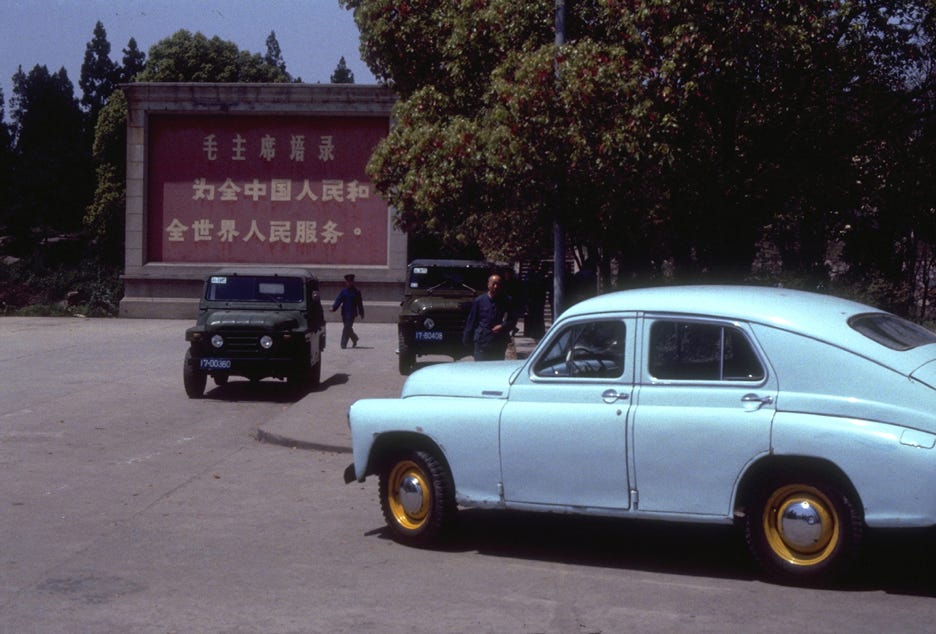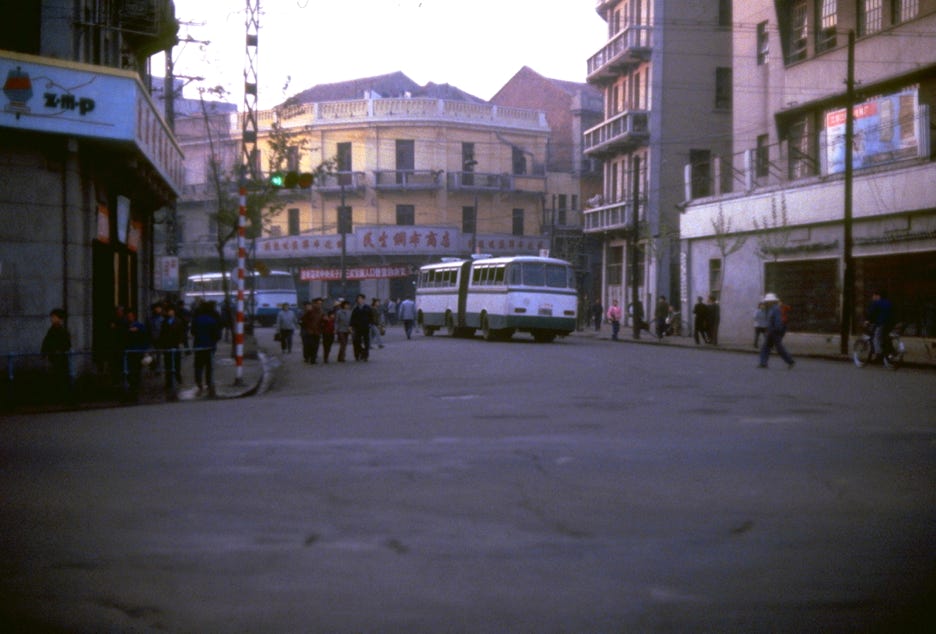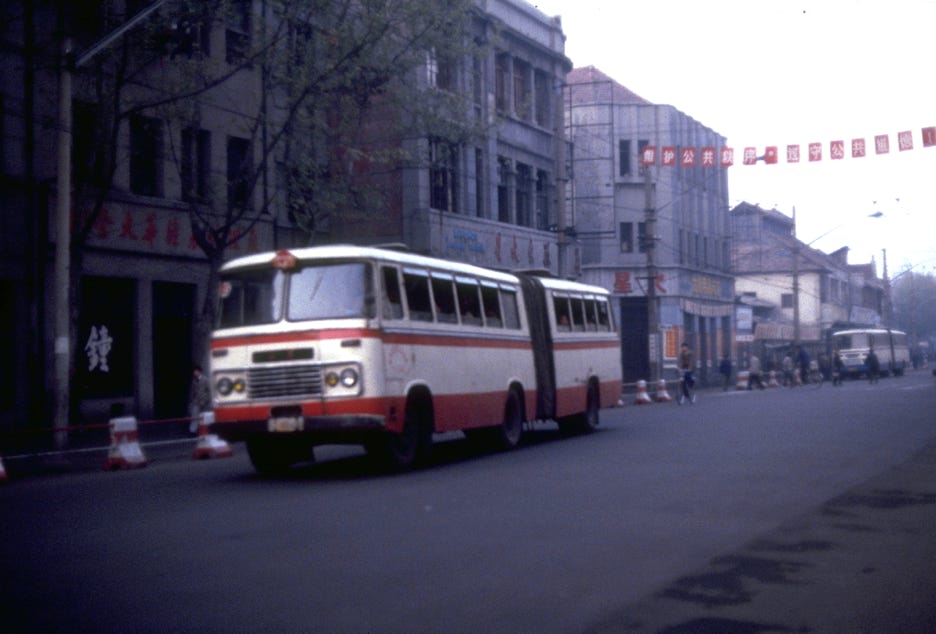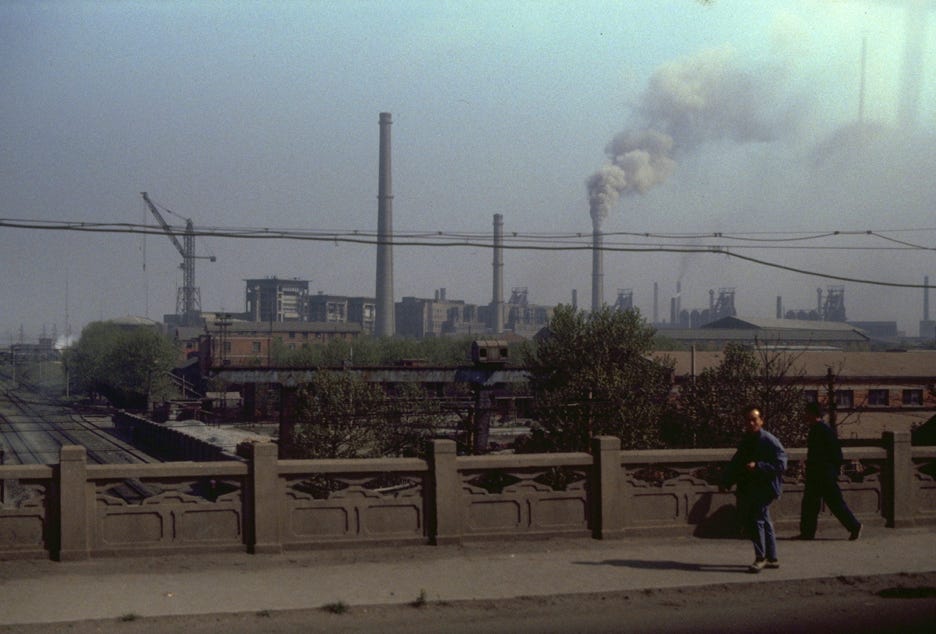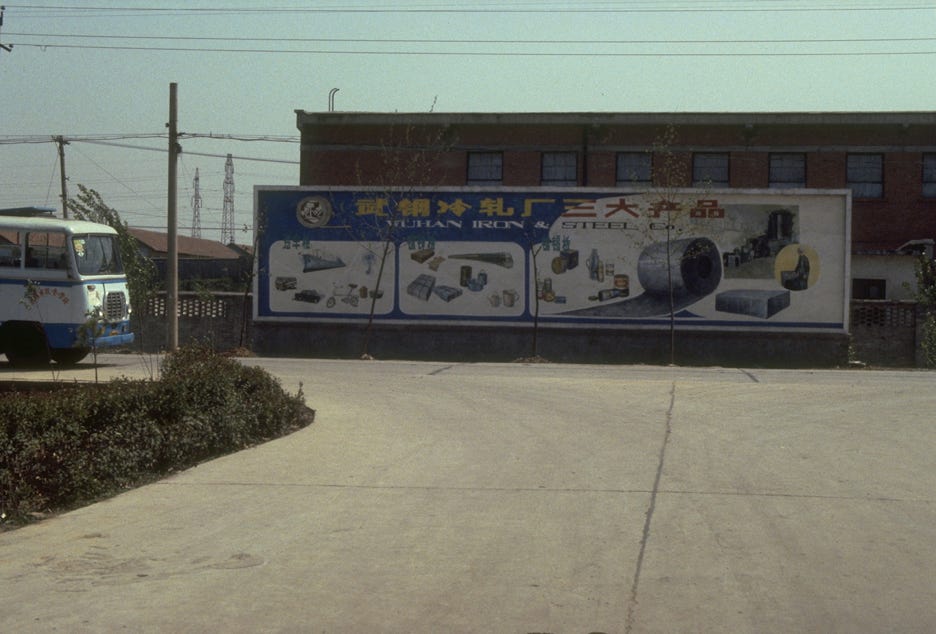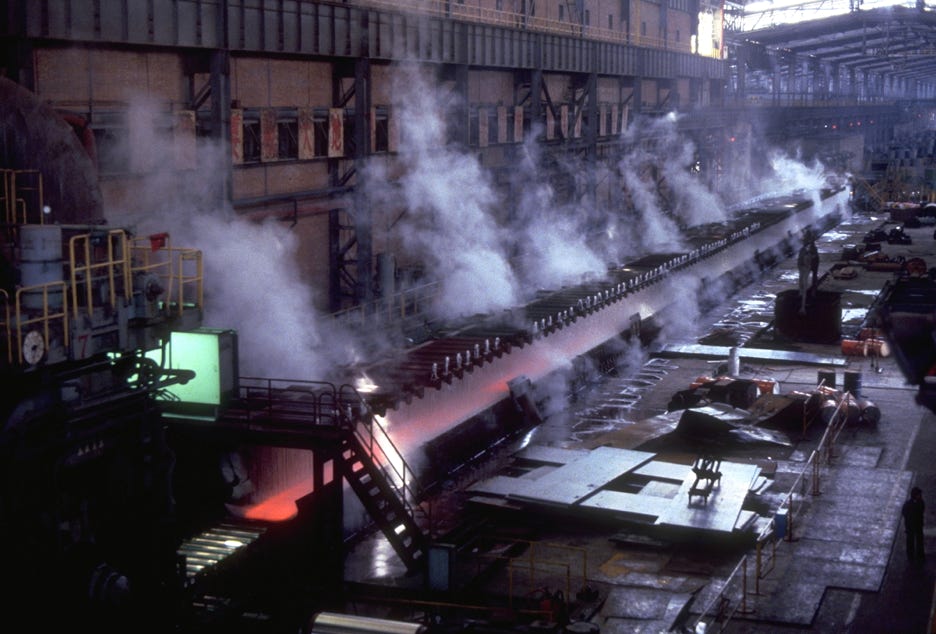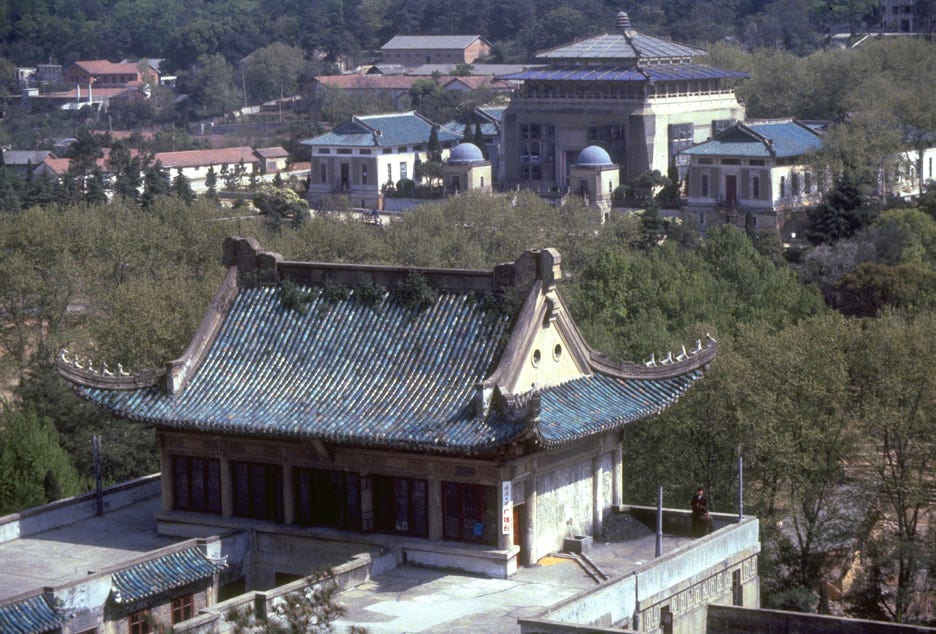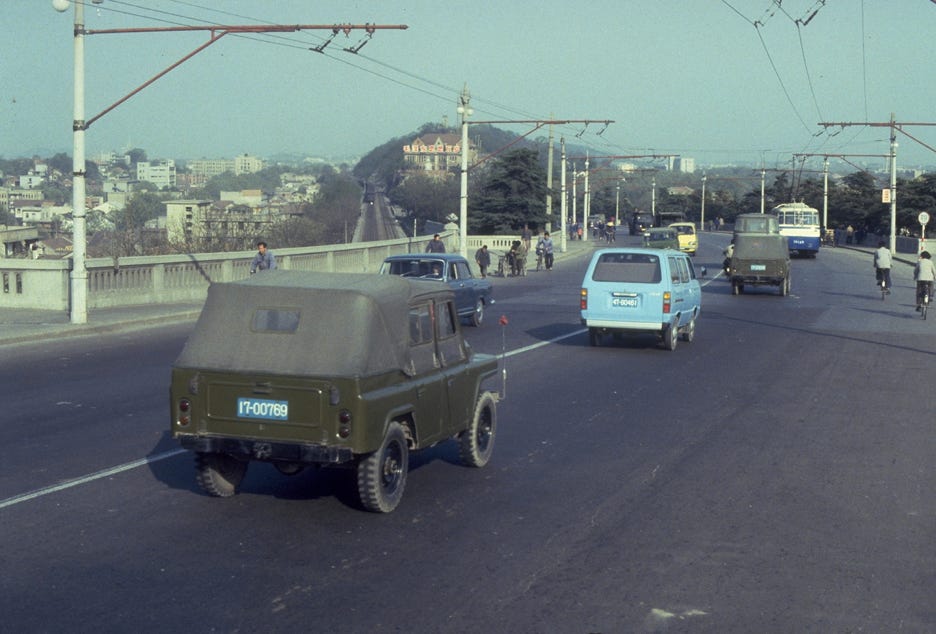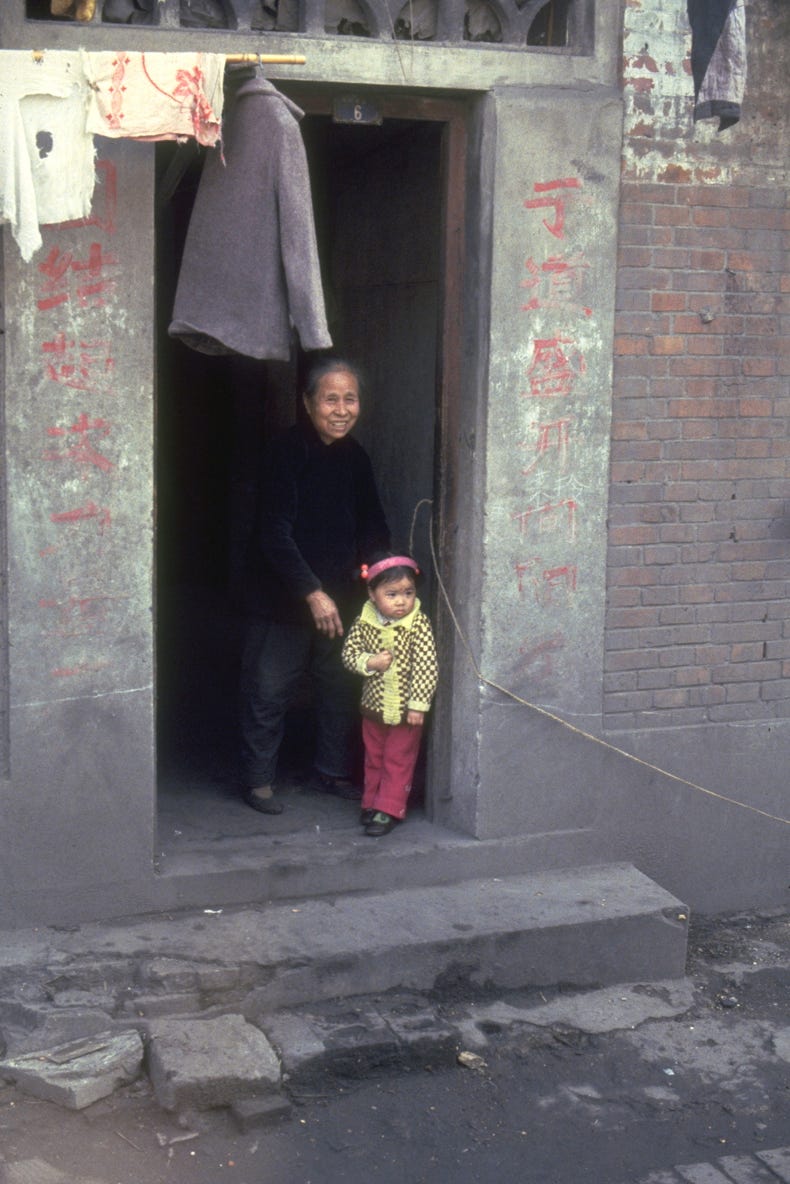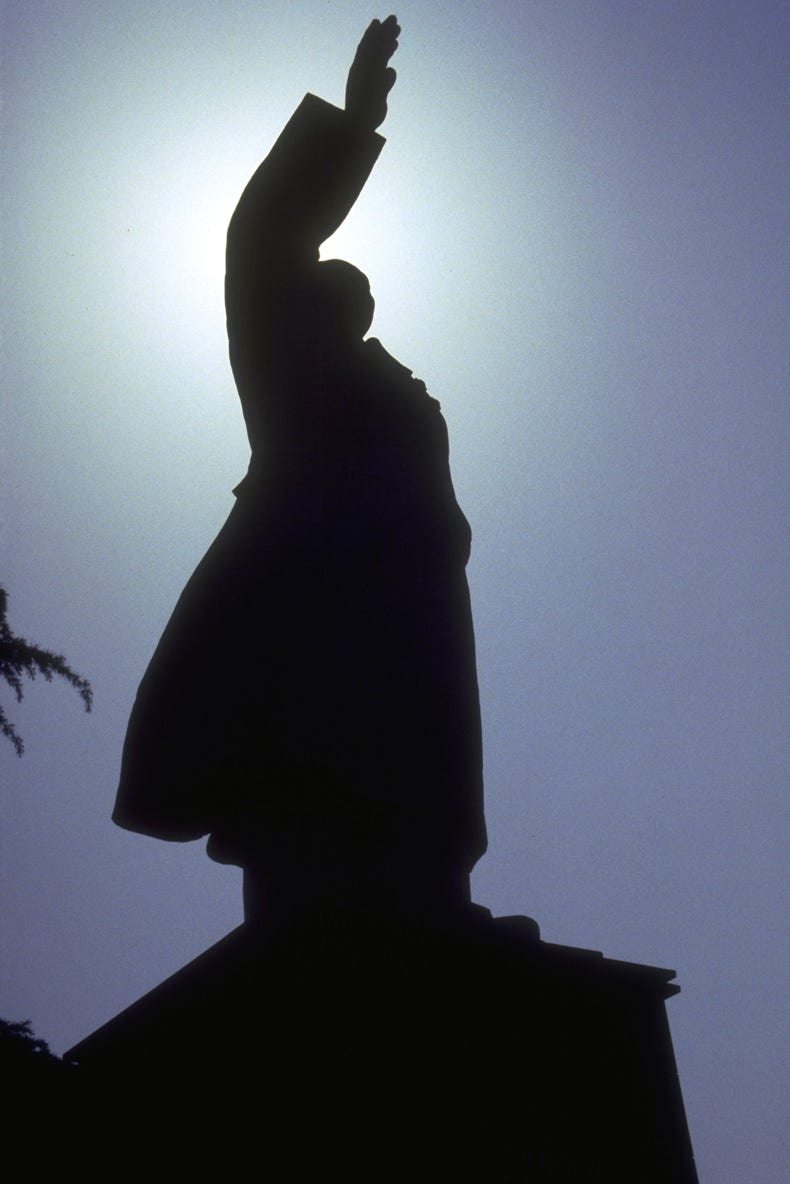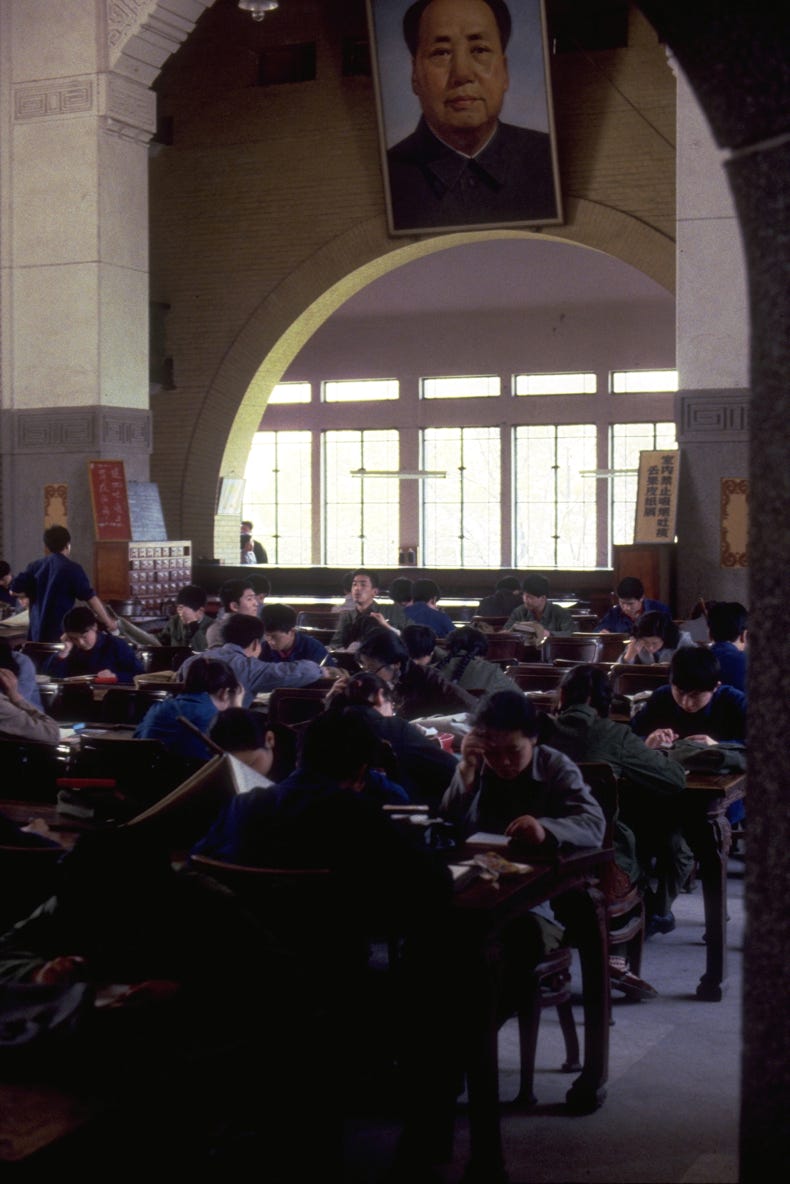

The train is not a great place for writing, so I will make today’s correspondence brief.
This morning we visited the Wuhan Iron and Steel Works, the second largest steelworks in China (after Anshan). At the entrance to the steelworks we were greeted by a huge statue of Chairman Mao, the first I have seen on this visit. It was the classic ‘standing and waving, wearing an overcoat’ pose, and was certainly worth a stop to photograph.
The scale of the steelworks is breath-taking. The complex has an area of 10 square kilometres (excluding the living quarters and mines) and employs 10,000 workers, of whom 30% are women. It is located about 35 kilometres north-east of the main city of Wuhan.
It was great to be able to inspect and take photos in the steelworks, especially in the sheet rolling section which appeared (to my eyes) to be quite advanced technologically with hot rolling equipment from Japan and cold rolling equipment from West Germany. The plants were highly automated, although there was no evidence I could see of pollution control.
Construction began in the mid-1950s, with the No1 blast furnace added in 1958, more furnaces in 1959, and grooming and rolling mills in 1960. Two new mills were built recently (in 1978), and today the iron smelting plant operates with four furnaces and two steel mills operate with 11 Open-hearth furnaces (8 in one mill and 3 in the other). The complex also includes six rolling mills, six mines and 40 associated enterprises. Among the associated enterprises are 26 primary schools, 9 middle schools, a college, and hospitals with 700 inpatient beds and five outpatient departments. The steelworks’ current capacity is 28 million tonnes per annum, and production last year was 25 million tonnes. The steelworks operates its own trains, buses and trolley buses to transport the workers to and from their homes; the rest travel by bicycle.
The steelworks operates 24 hours per day, 7 days per week, in three shifts of eight hours each. Workers work six days each week, rotating their days off. The retirement age is 60 for men and 55 for women. After retiring, workers are entitled to 65-85% of their working wages as pensions (although “good workers” and bosses received pensions of 100% of their salaries). Retired workers are entitled to continue living in Steel City (the workers’ dormitory area) and obtain free medical care. Currently, the average wage for qualified workers is 42 to 108 yuan per month. New workers receive 22 yuan per month for their first year, 24 yuan per month for their second year, 27 yuan per month in their third year, and 42 yuan per month for their fourth year. Graduate engineers earl between 50 and 200 yuan per month.
Accommodation for workers is provided for 3 to 4% of their income; a regular house can be rented for 3 yuan per month. Workers have annual vacations of 8 days per year for all festivals and other public holidays, with women having one extra day per year for Women’s Day.
We were told that the steelworks is still developing and expanding, but more overseas=-sourced equipment is needed (plus some other unspecified reforms and changes).We were told that although problems of water pollution had been solved, air pollution remained a problem (understatement!). It was said that pollution from solids and dust had been eliminated, with these materials being recycled into building materials.
This afternoon we travelled to Wuhan University – somewhat disappointing because we couldn’t see any teaching being done.
First established in 1913 in Wuchang, Wuhan University is one of China’s largest tertiary institutions, with about 6,000 students, 1,600 teaching staff and 16 departments (but no Geography). Between 1,000 and 1,200 new students arrive each year from all parts of China having first passing the entrance examination, proving they are healthy and passing the requirement that their “thinking must be good” (which means having views that align politically with the government). The entrance examination is a standard China-wide examination (known as the ‘gaokao’) that is held each year on 7th, 8th and 9th June. The subjects in the entrance exam are Natural Science (Politics, Chinese, Mathematics, Physics, Chemistry and Foreign languages), and Literal Science (Economics, Politics, Chinese, Geography and History).
All students are boarders, but the concept of day students is being investigated as a way to allow more students to attend. Apparently the dropout rate is very low, being about 3 per 1,000, with the main reasons for dropping out being ill health or breaking rules. We were told that students and teachers help with political and ideological problems, but the university helps with financial problems. Students who fail examinations may re-attempt them the following year, but if they fail again, they must leave the university; apparently this only ever happens because of ill health.
The university teaches the subjects of Maths, Physics, Chemistry, Space Physics, Computing, Chinese, French, Other Foreign languages, Economics, Librarianship, Law and History. It operates on a two-semester year, with 1st semester from September to February, and 2nd semester from February to June, thus providing two months of vacation over summer – longer than other areas of China to take account of Wuhan’s hot climate.
Foreign languages are especially encouraged as China is now opening up to the world, and students in this area must learn two languages. Wuhan is one of six ‘key universities’ in China, which means that standards are high and research is encouraged.
The university was closed down for three to four years during the Cultural revolution, but now seems to be functioning peacefully and productively, offering four year degrees as well as a spare-time college and a TV college (that has 410,000 students!).
One highlight of the visit to this beautiful campus was seeing inside the library, which contains 1.6 million books, but even more impressively, a huge wall portrait of Chairman Mao looking down on the students in the reading room.
But now I’m on an overnight train from Wuhan to Peking. Overall, the train trip is surprisingly and unexpectedly comfortable. We have a diesel-electric locomotive pulling a 22-carriage train (very long!). Our sleeping arrangements are four-berth cabins in double bunks, which I think is called “soft class” – first class comprises two-berth cabins and hard class is six-berth cabins.

